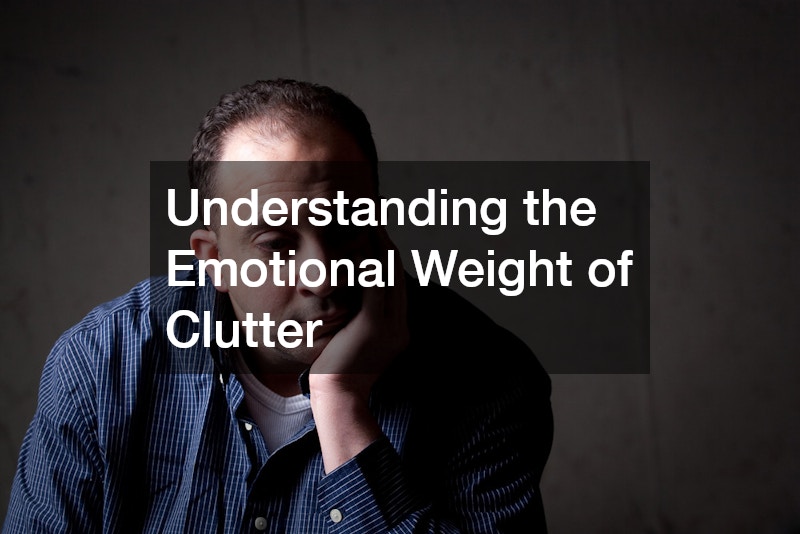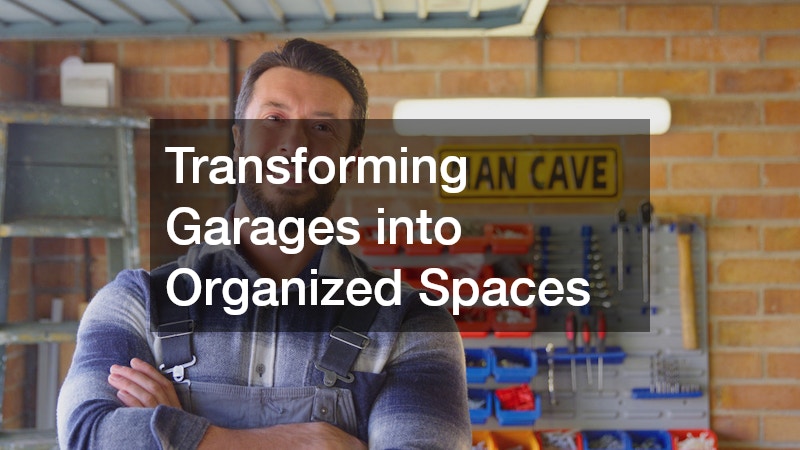Clearing clutter in your home often feels like an impossible task. You start with one room, only to find that the pile of belongings grows faster than you can sort through it. Even when you try to dedicate a weekend to organizing, the process can quickly feel overwhelming. But why does it feel so difficult to let go, and what strategies can make decluttering manageable and even satisfying?
Clutter is rarely just a physical problem—it’s also psychological and emotional. The challenge isn’t simply about having too many things; it’s about understanding why those things matter, how they affect your daily life, and what habits contribute to accumulation. Many people underestimate the subtle ways clutter affects mental clarity, productivity, and even relationships. When a home is disorganized, it’s not just a matter of misplaced items—it’s the constant, low-level stress of visual chaos.
Moreover, clutter often grows gradually, so you might not even notice it until it reaches a tipping point. What starts as a few boxes in the corner becomes a full closet of forgotten items or a garage overflowing with things you’ve kept “just in case.” Understanding the emotional and behavioral roots of clutter is the first step to reclaiming your space and reducing the stress it creates.
Understanding the Emotional Weight of Clutter

One reason clearing clutter is so hard is emotional attachment. Items can hold memories, sentimental value, or a sense of identity. For example, a box of old photos may trigger nostalgia, while outdated clothing can remind you of a past era you’re not ready to leave behind. These emotional ties often make it harder to decide what to keep and what to discard. Many people hold onto items out of guilt, a sense of obligation, or even the fear of “wasting” something that might be useful someday. These psychological barriers make clutter more than just a physical issue—it becomes a mental and emotional challenge as well.
Decision fatigue is another significant contributor. Each item in your home requires a choice: keep, discard, donate, or store. This may seem simple at first, but when multiplied across hundreds or thousands of items, the mental load becomes exhausting. People often procrastinate, avoid the task, or make inconsistent choices that lead to more clutter. Even small objects can feel like monumental decisions when you’re confronted with the cumulative total of everything in your home.
Physical space limitations also add to the difficulty. Overcrowded closets, poorly designed storage areas, or lack of designated spaces make it harder to maintain organization. When everything has no proper place, items accumulate on counters, floors, and tables, creating a sense of disorder. Combined with emotional attachment and decision fatigue, the lack of functional storage creates a perfect storm that keeps clutter persistent and frustrating.
Start with a Plan and Small Wins
Before diving into decluttering, it helps to create a clear plan. Many people fail at clearing clutter because they try to tackle too much at once. Instead of attempting to declutter the entire house in a single weekend, break it into manageable sections. Start with a drawer, a closet, or even a single shelf. By focusing on small, achievable goals, you build momentum and a sense of accomplishment that encourages continued progress. Small wins can also reduce the feeling of being overwhelmed and make the process more enjoyable.
Time-blocking is another effective method for managing clutter. Allocate specific periods of your day or week solely to decluttering, even if it’s just 20–30 minutes at a time. This prevents burnout and helps you maintain consistency. It’s also helpful to set clear boundaries for each session, such as deciding beforehand how many items you’ll sort or which area you’ll tackle. Doing so turns a daunting project into a structured activity with achievable milestones.
Planning also involves deciding how to categorize items: keep, store, discard, or hand off as charity donations. Having predetermined categories simplifies decisions and reduces emotional stress. For example, setting up labeled boxes for donations or items to store elsewhere can streamline the process. Combining small sections, time-blocking, and clear categories provides structure and clarity, making the overwhelming task of decluttering much more manageable.
Using Professional Help to Move Items

Sometimes, the sheer volume of belongings makes decluttering seem impossible. Large furniture, appliances, or boxes of belongings can quickly become unmanageable. In these cases, enlisting the help of movers can be a game-changer. Professional movers not only transport items safely but can also provide advice on what to relocate, store, or even donate. Their experience in handling large volumes of possessions makes the decluttering process faster, safer, and less stressful.
Movers are particularly valuable when preparing for major transitions, such as a home remodel, downsizing, or relocating. They can help you evaluate which items are essential for your new space and which ones can be sold, donated, or discarded. Having experts handle heavy lifting frees you to focus on decisions rather than logistics.
Additionally, movers often have experience working with storage solutions and temporary holding spaces. They can help coordinate what stays in the home versus what should go into short-term storage. By reducing the physical and mental load of moving and organizing, you can tackle clutter more efficiently and feel empowered rather than overwhelmed.
Maximizing Space with Thoughtful Storage
Finding space for the items you decide to keep is a major challenge in decluttering. Without proper storage, belongings accumulate in corners, on countertops, and in random piles. Investing in smart storage solutions is key to maintaining a clutter-free home. Optimizing home storage also involves understanding the flow of your space. Shelving, bins, and organizational tools should be tailored to your lifestyle. For example, open shelving can make frequently used items accessible, while closed storage can hide clutter and create a sense of order. Stackable containers, under-bed storage, and modular systems can maximize space in ways that standard furniture often cannot.
On the other hand, storage services can be particularly helpful for cleaning up, providing temporary space for items while you decide what to keep, donate, or sell. This is especially useful for seasonal items or rarely used belongings.
Creating a system that works for you encourages long-term organization. When each item has a designated spot, it’s easier to put things away and maintain order. Thoughtful storage also reduces the temptation to leave items lying around, making clutter easier to prevent rather than just manage.
Handling Large Debris and Junk

Decluttering isn’t just about organizing—it’s about removing items that no longer serve a purpose. Large, unwanted items or accumulated junk can be a major obstacle in maintaining a clean, functional home. Local roll off dumpster services provide an efficient way to dispose of bulky or excessive waste. Renting a dumpster allows you to clear large volumes of debris without multiple trips to the landfill or donation centers.
This approach is especially useful during major cleanouts, such as basement purges, garage decluttering, or post-renovation debris removal. Having a designated container on-site simplifies the process, making it easy to dispose of items immediately rather than letting them linger. Dumpster services also handle disposal responsibly, ensuring that materials are properly recycled or discarded according to local regulations.
Using a dumpster can turn an overwhelming, days-long process into a manageable task. With a container in place, you can systematically fill it over several days or weeks, tackling clutter in stages. This method provides visual motivation as you see your space gradually clearing, reinforcing your progress and reducing feelings of discouragement.
Rethinking Cabinet and Storage Design
Inefficient storage solutions often contribute to clutter. Poorly designed cabinets, drawers, or closets make it hard to access items and encourage disorganization. Engaging with a cabinet design expert can transform storage from a source of frustration into a functional, organized system.
Professional designers can assess your space, identify inefficiencies, and recommend solutions tailored to your needs. Adjustable shelves, pull-out drawers, and built-in organizers create clear zones for different types of items. Well-designed cabinets also make it easier to visualize how much you can realistically store, encouraging you to let go of excess possessions.
Modern cabinet design often incorporates hidden storage or multi-functional features, allowing you to maximize space without sacrificing aesthetics. Thoughtful storage solutions can transform kitchens, bathrooms, or living areas into areas that promote cleanliness rather than accumulate clutter. The right design not only helps organize belongings but also reduces stress and enhances the functionality of your home.
Transforming Garages into Organized Spaces

Garages are notorious for becoming clutter magnets. With everything from sports gear to seasonal decor tossed in randomly, these spaces quickly become chaotic. Creating custom garages with built-in shelving, storage racks, and workbenches can dramatically improve organization.
Custom garages are tailored to your lifestyle, ensuring that everything from tools to recreational equipment has a designated spot. This not only maximizes storage efficiency but also makes it easier to keep track of belongings. When a garage is functional and visually organized, it encourages consistent upkeep rather than allowing clutter to accumulate unnoticed.
In addition to storage, custom garages can include zones for specific activities, such as DIY projects, car maintenance, or home fitness. By defining clear areas for each type of use, you prevent items from spilling into other spaces, maintaining a sense of order throughout. A well-organized garage also increases the overall usability of your home, making previously neglected spaces functional and enjoyable.
Decluttering During Home Additions and Renovations
When planning home additions, it’s common to realize how much clutter has accumulated over the years. Renovation projects naturally draw attention to disorganized spaces and often force homeowners to confront the sheer volume of belongings they’ve been storing. By viewing a home addition as an opportunity to declutter, you can make the most of the new space while establishing better organizational habits.
A thoughtful approach begins with sorting items into categories: keep, store, donate, or discard. For items that don’t have an immediate place in the home, temporary storage services can provide a secure and accessible solution. This allows you to continue renovations without leaving belongings in disarray or creating obstacles for contractors.
Engaging a remodeling company during a renovation also helps streamline the decluttering process. Experienced professionals can advise on space planning, suggest built-in storage options, and even coordinate temporary relocation of furniture and belongings. With expert guidance, clutter removal becomes part of the larger project, rather than an additional task that feels overwhelming.
Home additions also offer the chance to design spaces that naturally discourage clutter. For example, additional closets, cabinetry, or flexible storage areas can accommodate seasonal items or hobby supplies. By integrating organization into the structure of the new space, you create a home that is both functional and easy to maintain, ensuring clutter doesn’t accumulate again once the renovation is complete.
Clearing clutter is rarely just a matter of tidying up—it’s a combination of emotional, practical, and spatial challenges. From sentimental attachment to physical limitations and inefficient storage, the obstacles can feel daunting. However, by breaking the process into manageable steps and incorporating strategic solutions, even the most overwhelmed homeowners can regain control of their space.
Professional assistance can make a dramatic difference. Utilizing movers to handle large items, coordinating with storage services, or renting local roll off dumpster services ensures the physical work is manageable. Thoughtful planning with cabinet design and custom garages creates functional, lasting storage, while home additions and guidance from a remodeling company make decluttering part of a broader home improvement strategy. Addressing hidden issues through a water damage company protects your belongings and your home, and donating items through charity donations gives clutter a positive new purpose. Even seemingly small upgrades, such as installing new countertops, can encourage tidier habits and reduce visual chaos.
Ultimately, clearing clutter is a journey that blends practical solutions, thoughtful planning, and mindful decision-making. With patience, consistency, and the right resources, any home can be transformed into a calm, organized, and welcoming environment. The key is to take one step at a time, use available tools and professional help, and commit to creating systems that maintain order for years to come. A clutter-free home isn’t just about aesthetics—it’s about creating a space that supports clarity, comfort, and well-being.
